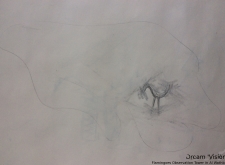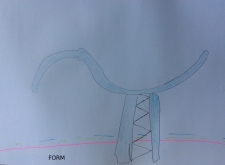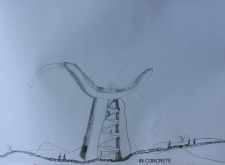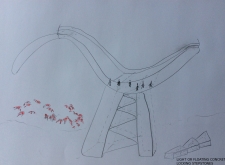5 key facts about this project
The architectural design takes inspiration from the unique characteristics of flamingoes, incorporating flowing forms that reflect their grace and elegance. The sweeping, organic lines of the structure create a visual continuity with the landscape, aiming to blend seamlessly into the natural surroundings. This approach not only enhances the aesthetic attributes of the project but also promotes sustainability by minimizing its visual and ecological footprint.
Several key components define the design of the Flamingoes Observation Tower. The main structure is predominantly constructed from concrete, a material known for its durability and ability to take on continuous curves, essential for achieving the desired organic shapes. The use of lightweight or floating concrete can further facilitate the ambitious design by allowing for extended cantilevers that provide unique vantage points for observation without compromising the structural integrity of the tower. The cantilevered sections invite visitors to step out into the space, creating a sense of being immersed in the natural habitat.
Pathways leading to the observation platforms are crafted with locking stepstones, designed not only for safety but also to offer an interactive experience. These pathways pave the way for a thoughtful journey, guiding visitors toward different levels of the tower where they can take in panoramic views of the wetlands. Each level is strategically positioned to maximize sightlines, ensuring that visitors have optimal opportunities to observe flamingoes and other wildlife in their natural habitat.
In considering the broader implications of the Flamingoes Observation Tower, it is noteworthy that it serves as an educational platform. Placed within the context of Al Wathba’s ecological and cultural landscape, the tower aims to foster a sense of stewardship toward these vital ecosystems. By blending architecture with environmental awareness, the project underscores a commitment to conservation while simultaneously providing an engaging visitor experience.
The approach to design reflects a dedication to sustainability. By prioritizing locally sourced materials and employing construction methods that are conscientious of environmental impact, the architectural team has taken steps to enhance the project’s sustainability profile. This deliberate choice not only supports the local economy but also reinforces the significance of the surrounding environment.
As you explore the presentation of the Flamingoes Observation Tower, consider delving into the intricate architectural plans and sections that illustrate the innovative design ideas underpinning this project. Engaging with these elements offers deeper insights into how the tower embraces its ecological context and serves its community. The project exemplifies how contemporary architecture can effectively respond to the environmental and cultural narratives of its location, creating a space that is both functional and enriching for visitors.


























